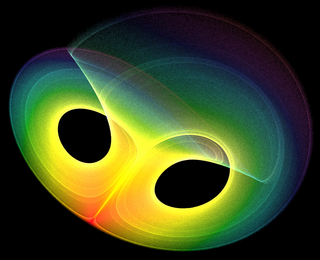General topics
Limits
- Limit of a sequence
- Subsequential limit – the limit of some subsequence
- Limit of a function (see List of limits for a list of limits of common functions)
- One-sided limit – either of the two limits of functions of real variables x, as x approaches a point from above or below
- Squeeze theorem – confirms the limit of a function via comparison with two other functions
- Big O notation – used to describe the limiting behavior of a function when the argument tends towards a particular value or infinity, usually in terms of simpler functions
Sequences and series
(see also list of mathematical series )
- Arithmetic progression – a sequence of numbers such that the difference between the consecutive terms is constant
- Generalized arithmetic progression – a sequence of numbers such that the difference between consecutive terms can be one of several possible constants
- Geometric progression – a sequence of numbers such that each consecutive term is found by multiplying the previous one by a fixed non-zero number
- Harmonic progression – a sequence formed by taking the reciprocals of the terms of an arithmetic progression
- Finite sequence – see sequence
- Infinite sequence – see sequence
- Divergent sequence – see limit of a sequence or divergent series
- Convergent sequence – see limit of a sequence or convergent series
- Cauchy sequence – a sequence whose elements become arbitrarily close to each other as the sequence progresses
- Convergent series – a series whose sequence of partial sums converges
- Divergent series – a series whose sequence of partial sums diverges
- Power series – a series of the form
- Taylor series – a series of the form
- Maclaurin series – see Taylor series
- Binomial series – the Maclaurin series of the function f given by f(x) = (1 + x) α
- Maclaurin series – see Taylor series
- Taylor series – a series of the form
- Telescoping series
- Alternating series
- Geometric series
- Harmonic series
- Fourier series
- Lambert series
Summation methods
- Cesàro summation
- Euler summation
- Lambert summation
- Borel summation
- Summation by parts – transforms the summation of products of into other summations
- Cesàro mean
- Abel's summation formula
More advanced topics
- Convolution
- Cauchy product –is the discrete convolution of two sequences
- Farey sequence – the sequence of completely reduced fractions between 0 and 1
- Oscillation – is the behaviour of a sequence of real numbers or a real-valued function, which does not converge, but also does not diverge to +∞ or −∞; and is also a quantitative measure for that.
- Indeterminate forms – algebraic expressions gained in the context of limits. The indeterminate forms include 00, 0/0, 1∞, ∞ − ∞, ∞/∞, 0 × ∞, and ∞0.
Convergence
- Pointwise convergence, Uniform convergence
- Absolute convergence, Conditional convergence
- Normal convergence
- Radius of convergence
Convergence tests
- Integral test for convergence
- Cauchy's convergence test
- Ratio test
- Direct comparison test
- Limit comparison test
- Root test
- Alternating series test
- Dirichlet's test
- Stolz–Cesàro theorem – is a criterion for proving the convergence of a sequence
Functions
- Function of a real variable
- Real multivariable function
- Continuous function
- Smooth function
- Differentiable function
- Integrable function
- Monotonic function
- Bernstein's theorem on monotone functions – states that any real-valued function on the half-line [0, ∞) that is totally monotone is a mixture of exponential functions
- Inverse function
- Convex function, Concave function
- Singular function
- Harmonic function
- Rational function
- Orthogonal function
- Implicit and explicit functions
- Implicit function theorem – allows relations to be converted to functions
- Measurable function
- Baire one star function
- Symmetric function
- Domain
- Codomain
- Support
- Differential of a function
Continuity
- Uniform continuity
- Lipschitz continuity
- Semi-continuity
- Equicontinuous
- Absolute continuity
- Hölder condition – condition for Hölder continuity
Distributions
Variation
Derivatives
- Second derivative
- Inflection point – found using second derivatives
- Directional derivative, Total derivative, Partial derivative
Differentiation rules
- Linearity of differentiation
- Product rule
- Quotient rule
- Chain rule
- Inverse function theorem – gives sufficient conditions for a function to be invertible in a neighborhood of a point in its domain, also gives a formula for the derivative of the inverse function
Differentiation in geometry and topology
see also List of differential geometry topics
- Differentiable manifold
- Differentiable structure
- Submersion – a differentiable map between differentiable manifolds whose differential is everywhere surjective
Integrals
(see also Lists of integrals)
- Antiderivative
- Fundamental theorem of calculus – a theorem of antiderivatives
- Multiple integral
- Iterated integral
- Improper integral
- Cauchy principal value – method for assigning values to certain improper integrals
- Line integral
- Anderson's theorem – says that the integral of an integrable, symmetric, unimodal, non-negative function over an n-dimensional convex body (K) does not decrease if K is translated inwards towards the origin














